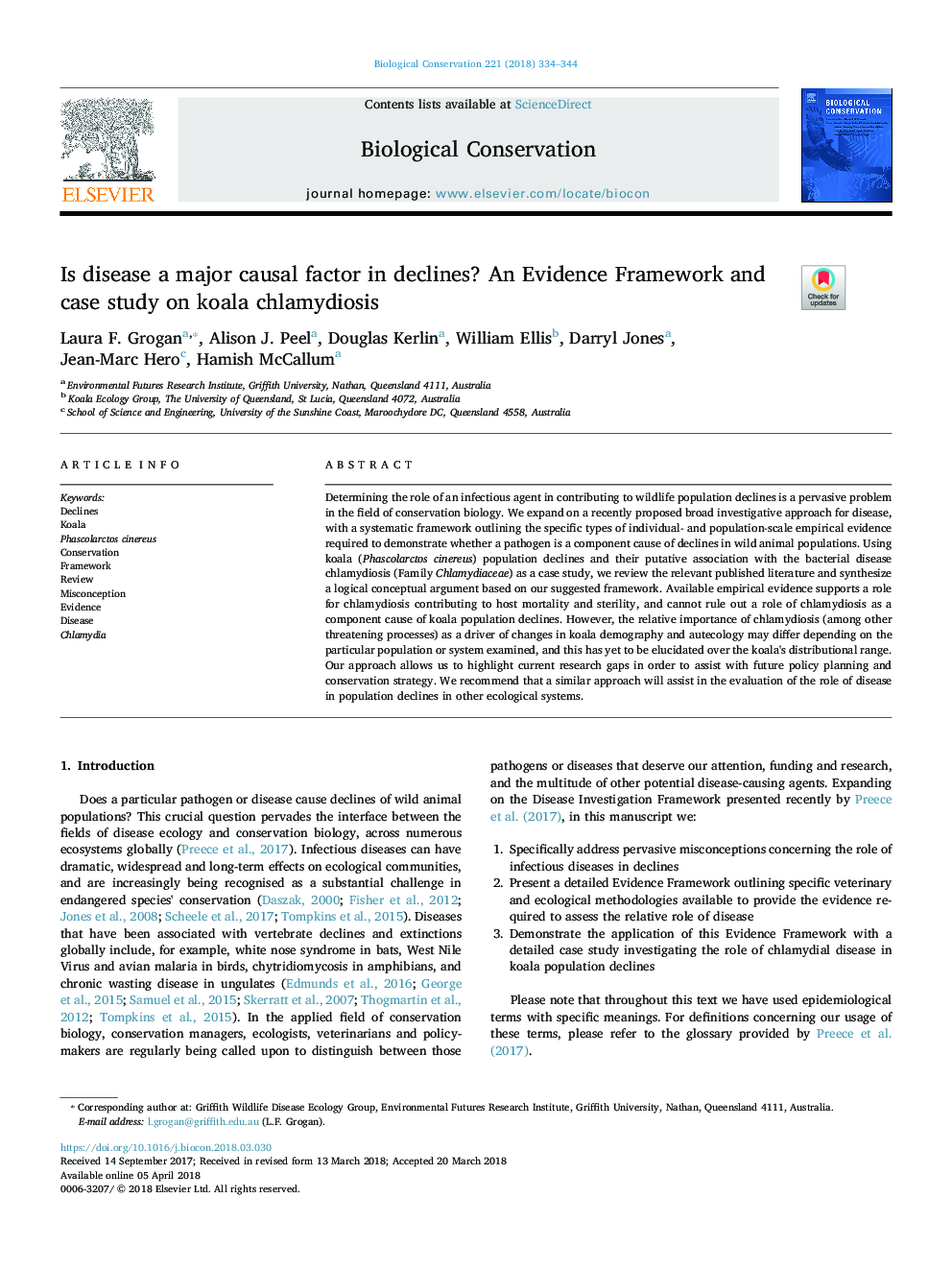| Article ID | Journal | Published Year | Pages | File Type |
|---|---|---|---|---|
| 8847292 | Biological Conservation | 2018 | 11 Pages |
Abstract
Determining the role of an infectious agent in contributing to wildlife population declines is a pervasive problem in the field of conservation biology. We expand on a recently proposed broad investigative approach for disease, with a systematic framework outlining the specific types of individual- and population-scale empirical evidence required to demonstrate whether a pathogen is a component cause of declines in wild animal populations. Using koala (Phascolarctos cinereus) population declines and their putative association with the bacterial disease chlamydiosis (Family Chlamydiaceae) as a case study, we review the relevant published literature and synthesize a logical conceptual argument based on our suggested framework. Available empirical evidence supports a role for chlamydiosis contributing to host mortality and sterility, and cannot rule out a role of chlamydiosis as a component cause of koala population declines. However, the relative importance of chlamydiosis (among other threatening processes) as a driver of changes in koala demography and autecology may differ depending on the particular population or system examined, and this has yet to be elucidated over the koala's distributional range. Our approach allows us to highlight current research gaps in order to assist with future policy planning and conservation strategy. We recommend that a similar approach will assist in the evaluation of the role of disease in population declines in other ecological systems.
Keywords
Related Topics
Life Sciences
Agricultural and Biological Sciences
Ecology, Evolution, Behavior and Systematics
Authors
Laura F. Grogan, Alison J. Peel, Douglas Kerlin, William Ellis, Darryl Jones, Jean-Marc Hero, Hamish McCallum,
